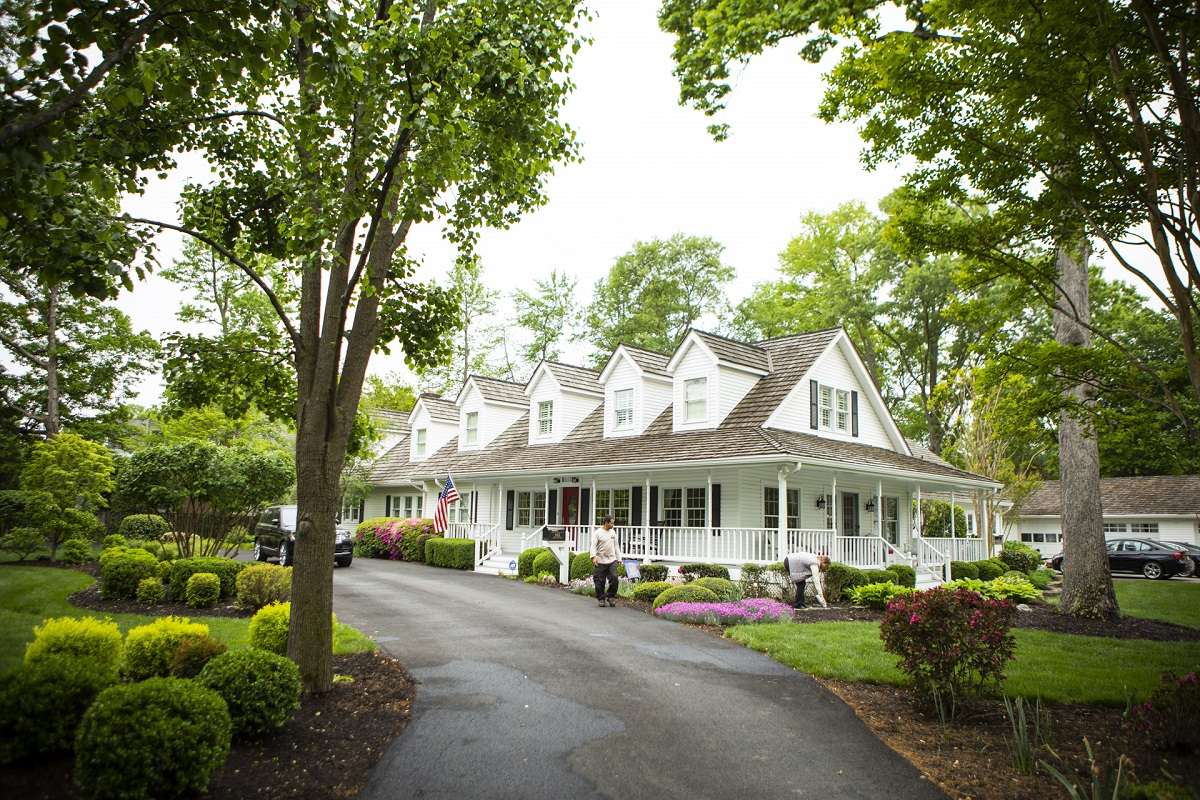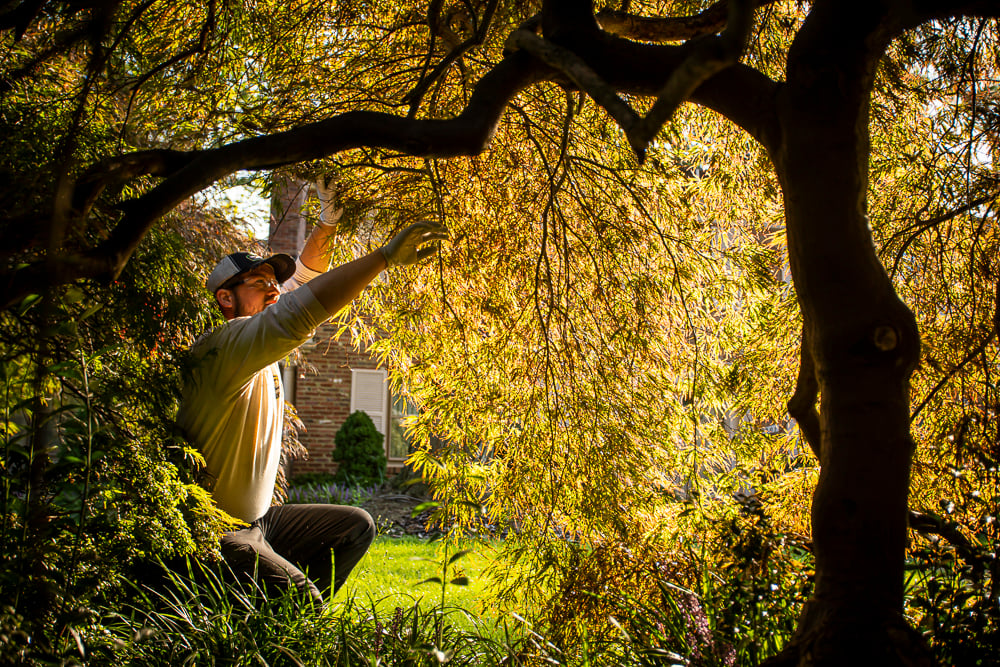


Can a brown shrub be saved? This is a common question we receive from homeowners concerned about a struggling tree or shrub in their landscape.
We understand that homeowners can become alarmed if they notice any of their small trees or shrubs turning brown and declining.
After all, the trees and shrubs are one of your property’s greatest assets. They offer a wide range of benefits that you can enjoy for many years to come.
In this article, we’ll talk about some of the reasons why trees and shrubs turn brown in the first place.
We’ll also discuss whether they can be saved and, most importantly, how to prevent these problems in the first place with proper landscape maintenance.
There are several reasons why your shrubs and small ornamental trees might be turning brown. Determining the reasons behind your landscape's decline is crucial for making corrections and preventing future problems.
Some of the most common reasons for plants turning brown include the following:
People tend to automatically assume that a brown shrub is drought-stressed and has not received enough water. While it is true that underwatering can lead to browning, people are often surprised to learn that overwatering can also cause shrubs to turn brown.
When you water too much, you can drown the plants’ roots.
Usually, the condition of the soil is a clue as to whether a shrub is being overwatered or underwatered. If the soil is dry and cracked, this can be a sign of underwatering. But if the soil is soggy (and maybe mushrooms are growing), your plant is receiving too much water.
Proper watering is a crucial element of tree and shrub care.
Another common cause of plant decline leading to browning is pest problems. There are many landscape pests here in Northern Virginia. Bagworms, scale insects, spider mites, and others can be the reason your plants are starting to turn brown.

Different pests can damage your shrubs in various ways. Some use their piercing, sucking mouthparts to suck plant juices while others feed on leaves or even bore into the trunk. You want to make sure that pest control is part of your plant health care program to avoid (or address) these issues.
Plant diseases are also lurking in the landscape and can be a reason why your trees or shrubs may be turning brown.
Landscape diseases can be serious and require professional diagnosis. At the very least, diseases can cause cosmetic damage, leaving your landscape looking unappealing. Disease control is a vital part of a plant health care program.
Another common cause of browning shrubs is simply the environmental conditions. Significant temperature fluctuations and weather changes can cause problems. Drought can mean that your plants end up drying out if you aren’t supplementing with extra water.
Your tree or shrub could also be turning brown and struggling if it was planted in a subpar location for its needs. Your trees and shrubs have specific needs regarding their growing conditions, and they must be installed in an area of the property where they can be sustained.
Planting errors, such as planting a tree or shrub too shallow or too deep, can also be an issue.

Of course, accidents can also be a cause of browning. For instance, chlorinated pool water being emptied or leaking into an area where shrubs are growing can lead to damage.
Pruning mistakes are another common plant accident that can occur.
We understand that it is upsetting if you notice a tree or shrub has turned brown. While it’s true that this could mean it is dying (or dead), that’s not always the case.
Often, only certain areas of the plant are struggling, but live growth is still occurring. Many shrubs can recover once the problem is addressed and some extra care is provided. Maintaining regular landscape services, such as watering, proper pruning, and plant healthcare, can often help restore trees and shrubs.
Identifying the symptoms of a sick tree or shrub will help determine if the plant can be revived. Many different symptoms can present when a shrub or tree is sick. Taking note of the various signs or symptoms that you’re noticing can help in the quest to figure out what’s wrong.

Keep in mind that it’s not uncommon for a tree or shrub to be suffering from more than one problem at once. Once a plant is struggling, it often becomes more prone to issues.
Of course, some problems simply can’t be fixed. Planting errors, for instance, can’t be easily solved. No matter how much attention you give a shrub that was installed in a poor location or improperly, it is likely always going to struggle. Sometimes, it’s simply better to start over.
As we’ve mentioned, the key to saving a browning tree or shrub is to identify what’s wrong with it and then implement a treatment plan (if one exists). Some problems are more easily solved than others. It will also depend on how severely your plant has already been damaged.
Calling in a professional can help ensure you correctly identify the problem and also begin the right treatment.
A well-trained professional will know everything from how to properly diagnose the tree or shrub to how to implement an effective treatment plan. However, please note that this is not something every company knows how to do.
This is why it’s so important to work with a company that has knowledgeable tree care professionals on staff—a company that knows its stuff.
Ideally, you want to try to avoid a tree or shrub from turning brown through proper tree and shrub care. This includes a combination of cultural practices, such as proper watering and pruning, as well as fertilization, disease, and pest treatments, which should be part of a comprehensive plant health care program.
Keeping up with all of this can be complicated. That’s why many homeowners appreciate the idea of landscape maintenance plans that eliminate all the guesswork.
At Kingstowne Lawn & Landscape, our focus is on landscape maintenance plans that mean services are completed for you on an ongoing basis. You don’t have to remember to call or set something up.
We have several plans that can help set your shrubs and small trees up for success.
As we’ve mentioned, pruning is a critical tree and shrub care service. At Kingstowne Lawn & Landscape, we offer a range of pruning plans that allows you to select the ideal program for your specific landscape needs. This will help ensure that you don’t fall behind on this vital service and that it’s performed properly.
Proper mulching can also help protect your trees and shrubs. A properly applied layer of mulch helps insulate the roots of precious plants and retain water, both of which are essential for the health of trees and shrubs.
You can also invest in a plant health care program, which will help set your plants up for success. Simply put, plant health care provides your plants with vital nutrients they need to thrive while also protecting them against insects and disease. The treatments combine fertilization, pest control, and disease control.
That means, with plant healthcare, your plants’ leaves may be greener, their flowers may grow more profuse with potentially longer bloom times, and they may be better protected against the threat of insects or disease.

It’s a great way to help prevent your trees and shrubs from turning brown.
If you have ornamental trees and shrubs under 20 feet in height, our Plant Health Care Technicians would be happy to help you. If your trees are over that size, we recommend calling a tree service, as they have equipment that can reach taller trees.
One of the most significant benefits of handing some of these tasks over to a professional is that it relieves you of the burden. Not only do you no longer have to worry about finding the time, but you’ll also have the peace of mind that everything is being performed properly. Making mistakes with tree and shrub care can lead to greater problems.
But when you hand those services over to a pro, that’s no longer your worry.

This will free up your time, eliminate your burdens, and provide you with the peace of mind that your property will truly look its best.
We believe you deserve to enjoy your landscape without worrying about struggling trees or shrubs. When you invest in professional landscape maintenance services, you can gain valuable peace of mind that your landscape is as protected as possible.
Do you want to work with a landscaping company in Alexandria, Arlington, or Springfield, VA, that has extensive plant knowledge and can provide guidance on your shrub and tree problems? Request your quote today, then relax as your plants get the royal treatment.

Since its founding, Krisjan has led Kingstowne Lawn & Landscape with a straightforward philosophy: treat every customer like the “only” customer. His passionate pursuit of excellent customer service has led to 28 successful years and a thriving company with over 85 employees. Since 1997, Kingstowne has helped thousands of homeowners in the Alexandria, Arlington, and Springfield, VA area get what they want - a worry-free property they can be proud of.




If You're Looking For a Sign, This is It.
Seriously, that lawn isn't getting any better on it's own. Mrs. Jones just called the HOA on you